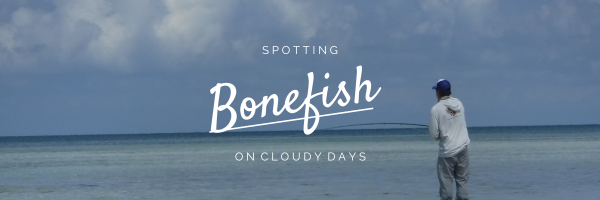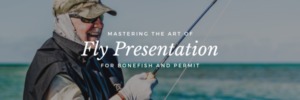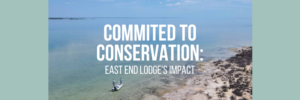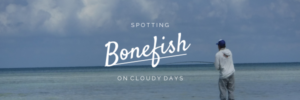Fly fishing for bonefish is an exhilarating experience that draws anglers from around the world to the pristine waters of Grand Bahamas. While sunny days are often preferred for spotting these elusive creatures, cloudy days can offer their own unique advantages. In this blog, we will unlock the secrets to spotting bonefish on cloudy days, providing you with expert tips and techniques that will enhance your chances of success. Join us as we dive into the world of bonefish spotting and explore the tips shared by the knowledgeable guides at East End Lodge.
Understand the Behavior of Bonefish in Cloudy Conditions:
Cloudy days can create an ideal environment for bonefish, as the diffused light reduces glare and shadows, making it easier for these silver ghosts to blend into their surroundings. Bonefish tend to be more active during overcast conditions, often venturing into shallower flats to forage for food. Knowing this behavior gives you an advantage in spotting them amidst the cloudy backdrop.
Polarized Sunglasses Are Essential:
Invest in a good pair of polarized sunglasses, as they are indispensable tools for spotting bonefish. These sunglasses not only protect your eyes from harmful UV rays but also help cut through the glare on the water’s surface, allowing you to see beneath the surface and spot bonefish more easily. Choose lenses with amber or copper tint, as they enhance contrast and provide better visibility in low-light conditions.
Look for Disturbances and Movements:
On cloudy days, bonefish tend to create disturbances on the water’s surface while feeding. Keep a keen eye out for any disturbances, such as wakes, tails breaking the surface, or subtle ripples caused by feeding activity. These telltale signs are your cues to focus your attention and make accurate casts.
Observe the Bottom Structure:
Cloudy conditions make it challenging to spot bonefish against a uniformly colored backdrop. Therefore, it becomes crucial to observe the bottom structure and look for irregularities. Bonefish often appear as dark shadows or silhouettes against lighter-colored sandy or grassy flats. Pay attention to slight changes in color, texture, or disturbances caused by bonefish feeding or moving.
Slow Down Your Approach:
Cloudy days can make bonefish more skittish, as their vision is impaired by low-light conditions. To increase your chances of success, slow down your approach and be mindful of your movements. Take smaller, stealthier steps to avoid spooking the fish and make longer casts to minimize the chances of line landing directly on the fish.
Use Flies with High Contrast:
Choosing the right fly pattern becomes crucial on cloudy days. Opt for flies that have high contrast and are visible in darker conditions. Select patterns with bright or flashy colors, such as chartreuse, pink, or orange, combined with contrasting darker shades. The added visibility will attract the attention of bonefish and increase your chances of a successful strike.
Cloudy days may present challenges for spotting bonefish, but armed with the expert tips shared by East End Lodge, you can turn these conditions to your advantage. By understanding bonefish behavior, equipping yourself with polarized sunglasses, observing disturbances, and adapting your approach, you’ll increase your chances of spotting and successfully targeting bonefish on cloudy days. Embrace the challenge, explore the flats of Grand Bahamas, and create unforgettable memories as you connect with these elusive creatures in their natural habitat.








